Hydrangea tree Pink Annabelle - how to care for a plant
Among all the ornamental shrubs, Pink Annabelle hydrangea is one of the most popular plants. A relatively new variety, which is valued for its large inflorescences and good frost resistance, is grown everywhere. Consider what this culture looks like, how to plant and care for it correctly.
- general characteristics
- Landing features
- Organization of the place
- Preparation of planting material
- Landing technology
- Care requirements
- Watering
- Top dressing
- Pruning
- Flowering care
- Post-flowering care
- Preparing for winter
- Reproduction methods
- Cuttings
- Stem layering
- By dividing the bush
- Diseases and pests
- Application in landscape design
- Testimonials
- Useful videos
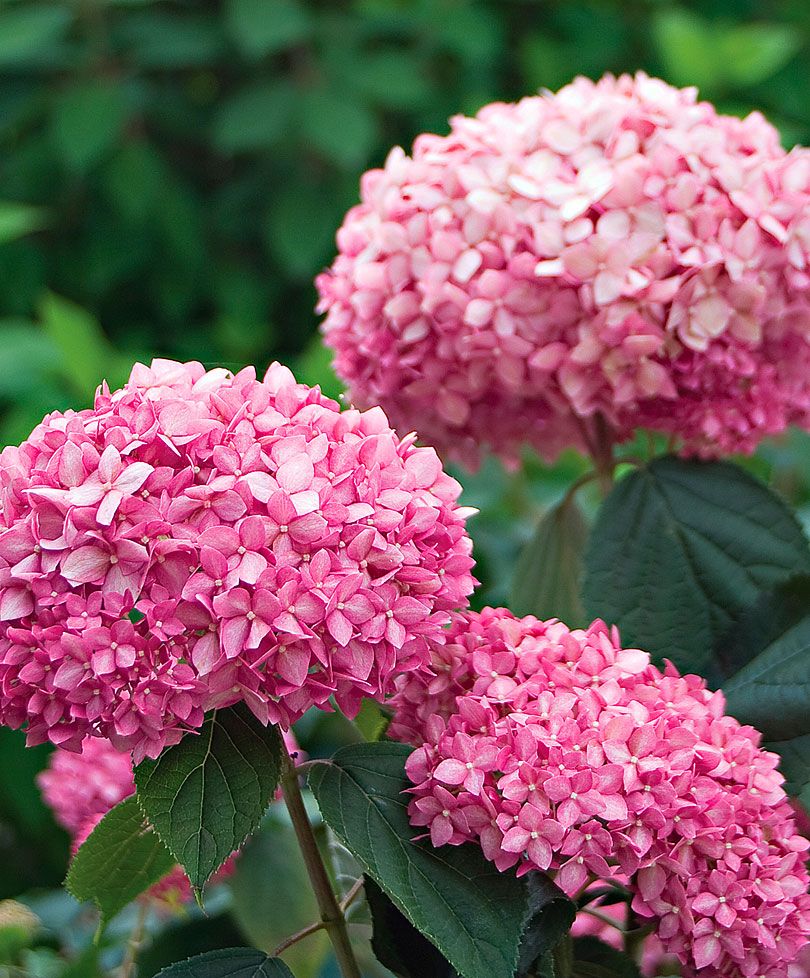
Hydrangea pink annabelle
general characteristics
The variety is fast-growing, frost-resistant, belongs to the group of treelike hydrangeas. The botanical name is hydrangea arborescens pink annabelle. External description:
- bush with a spherical crown;
- shoots are green, slightly pubescent, strong, erect, so the plant looks compact;
- leaves are emerald, oblong or ovate with a sharp tip and jagged edges;
- flowers are pink, small, collected in dense, large inflorescences with a circumference of 30 cm.
The crop is prized for its abundant bloom that begins in June and ends in September.
Landing features
The success of growing hydrangeas depends on meeting deadlines, planting rules and further care.
Depending on the region, the disembarkation time is different:
- in the south, in the Middle and Central zone - spring and early autumn;
- in areas with harsh climatic conditions - mid-spring (so that during the season the bushes have time to take root and prepare for winter).
Organization of the place
The plant prefers to grow in sunny places where there is good light in the morning and evening. When planting in the southern corner of the garden, it needs shading, since the leaves and flowers quickly fade.
It is not necessary to plant tall and spreading trees under the walls of the house, where there is always a shadow. At this point, the hydrangea stops growing, the leaves become pale, and the flowering is poor.
The soil is suitable for light, loose with high acidity. When planted on alkaline soil, the foliage turns yellow, on calcareous it retards growth and does not bloom so abundantly and colorfully.
Preparation of planting material
You can buy Pink Annabelle hydrangea in one of the specialty stores or nurseries.
The best material is seedlings 2-3 years old with closed roots (in an earthen coma or container). Such plants have a well-developed root system and crown. In addition, they take root faster and better after transplanting to the site.
When buying, carefully inspect the shoots, foliage - they should not have yellowness, black spots, growths and mechanical injuries. If, when shaking off, the leaves do not crumble, then the plant is fresh.
The substrate is slightly damp, without mold and acidification on the surface.
Before planting, the root system needs to be pruned slightly to stimulate the development of new roots.
Landing technology
The planting site is prepared two weeks before the planned planting of seedlings - all garden debris, plant residues are removed, dug up, leveled.
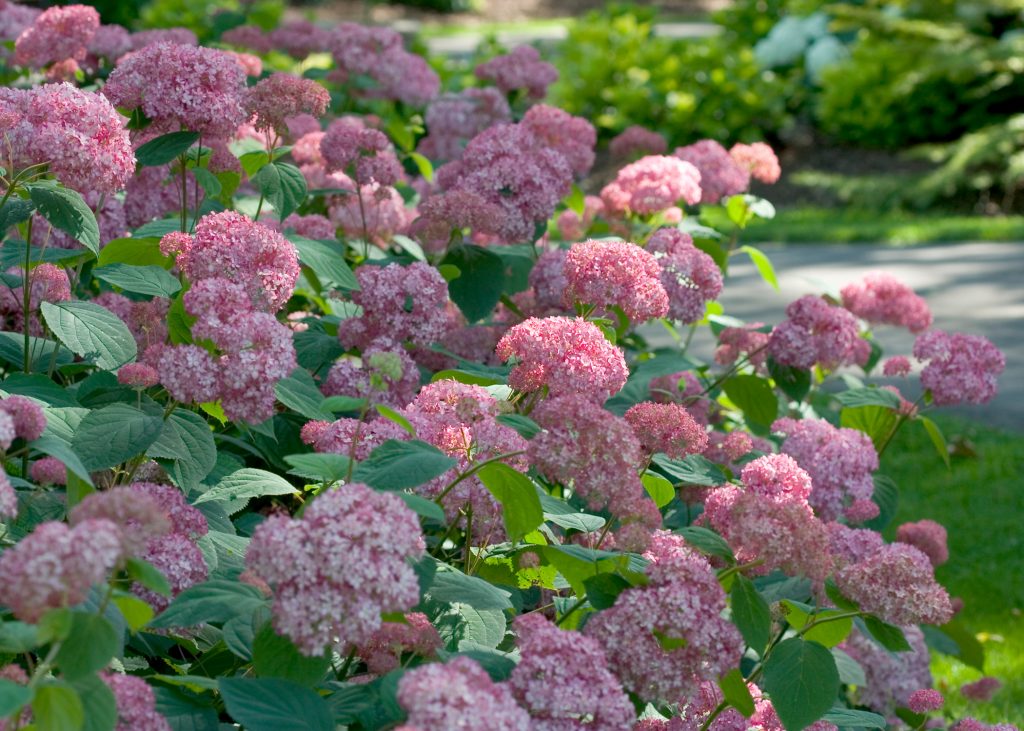
Pink annabelle hydrangea
Pits are pulled out slightly larger than the size of the root system. The approximate dimensions are 55x50 cm. Drainage (pebbles, crushed stone or screening) is laid at the bottom to ensure a good outflow of moisture from the roots. Sprinkle on top of a nutritious composition of peat, leafy earth, humus and sand, mixed in equal amounts.
The roots are lowered, straightened, covered with the remaining soil mixture, tamped, watered. Consumption per bush - 10 liters of water. So that the soil does not dry out, the near-trunk zone is mulched with peat or humus.
When growing in groups, you should adhere to the scheme - 3x2 m. So the plants will fully develop and there will be no competition for moisture and nutrients.
In the first two weeks, the seedlings are very sensitive to sunlight and can quickly fade. Therefore, at lunchtime, they are shaded with agrofibre or burlap.
Care requirements
Watering
Watering should be moderate but frequent:
- in the summer - once a week;
- closer to autumn - every 20 days.
Up to 20 liters are poured under one bush. Use settled water at room temperature.
The next day, the soil is loosened so that it allows moisture and oxygen to pass through well. Weeds are removed periodically, which are an excellent breeding ground for pests and infections.
After that, mulch with a thick layer of peat to protect the soil from drying out quickly.
Top dressing
For high-quality and long-lasting flowering, this shrub needs nutrients. It is necessary to fertilize anabel pink hydrangea two times:
- in mid-March with mullein solution - 1: 10;
- in the summer, before the beginning of budding, a complex of mineral fertilizers is introduced - superphosphate, potassium nitrate and urea in a ratio of 2: 1: 1.
Additionally, the plant can be watered with top dressing with a high content of iron and magnesium. This will help prevent the development of chlorosis.
Pruning
The optimal time for it is late autumn, when flowering ends and the plant will drop its foliage. Dried inflorescences, branches that have been damaged by diseases, parasites are cut off.
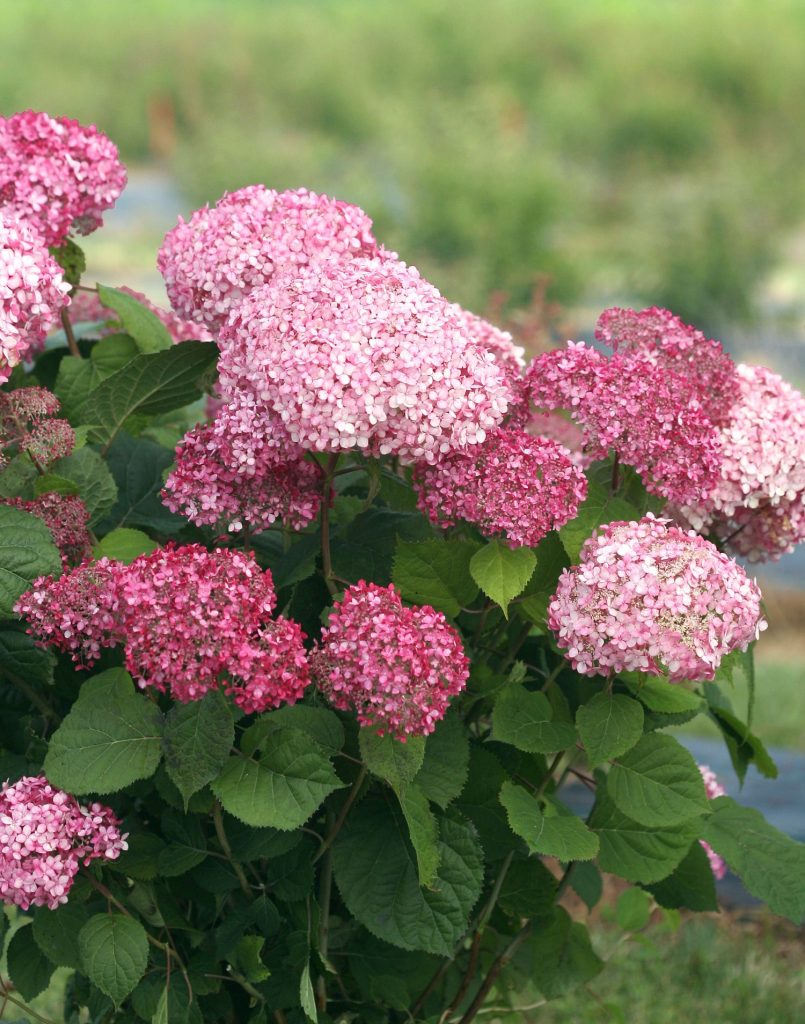
Hydrangea treelike pink anabel
Strong, faded branches are cut 5 cm in length, the rest are cut to the very base. This pruning will stimulate lush flowering the next year and strengthen the remaining stems.
All procedures are performed using a sharp and sterile instrument. The cut off place is treated with copper sulfate to avoid infection.
Flowering care
The main task of the gardener is to achieve the longest possible flowering. The plant continues to water, loosen the soil, remove the buds that have already faded.
Nutrition during the flowering period is not carried out, since fertilizers, especially with an increased nitrogen content, inhibit the budding process.
Post-flowering care
At the end of this process, the plant needs strength to recover in order to release new buds the next year and grow fully.
Compost or humus is introduced into the near-trunk zone - the consumption per bush is 5 kg. After that, abundant watering is carried out. They also cut out all non-viable parts that only take away nutrients and moisture.
Preparing for winter
Hydrangea Pink Annabelle has good winter hardiness and frost resistance, therefore it needs light insulation.
On the eve of the first frost, the twigs are carefully bent to the ground, pinned, then sprinkled with fallen leaves. So that the shelter does not fly off from the wind, you can lay spruce branches upstairs.
The covering material is removed in the spring, when the snow thaws and the threat of recurrent frosts has passed.
Reproduction methods
For tree hydrangea, gardeners use several breeding methods.
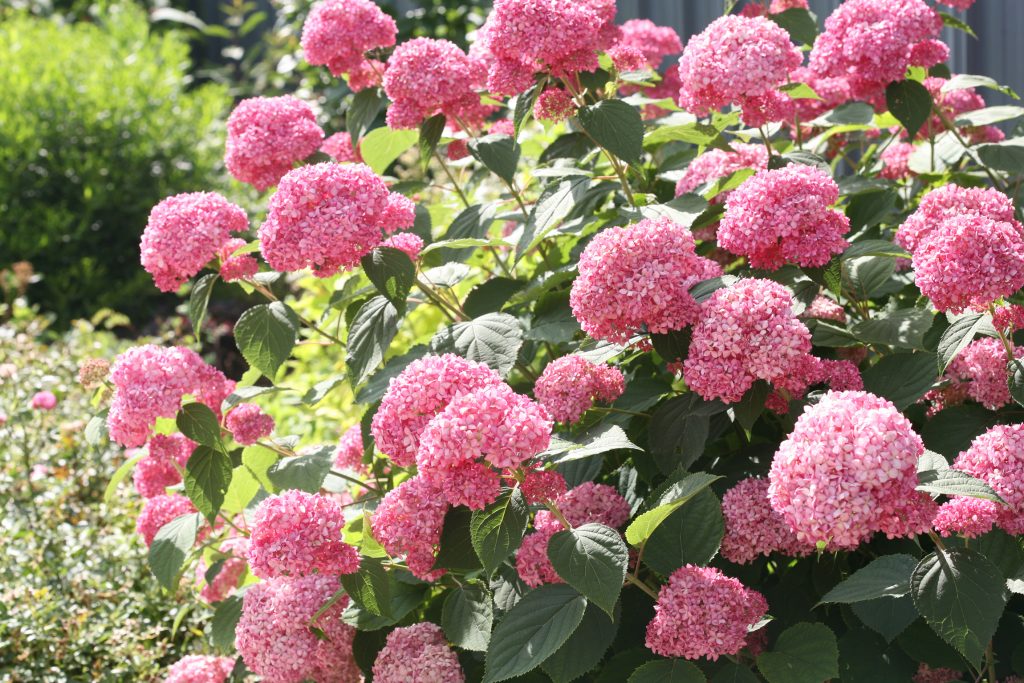
Pink anabel a variety of hydrangea tree
Cuttings
Cuttings are cut in the fall during a sanitary cut.At the top of the stems, the strongest branches with several leaves and buds are chosen. The shoots of the current year, which have not bloomed, have the best survival rate. The optimal length is 15-20 cm.
In the lower part, all the foliage is removed, then dipped into one of the growth stimulants for an hour. After this time, they are planted in a light, loose and well-moistened mixture of peat and sand. The embedding depth is 3-4 cm. Each stalk is covered with a half of a transparent plastic bottle to create a greenhouse effect.
Before the onset of persistent cold weather, the seedlings are covered with burlap or agrofibre. When grown in a harsh climatic zone, it is better to dig them up, transplant them into pots. In May, when the threat of return frosts has passed, it should be returned to its former habitat in the open field.
Stem layering
Hydrangea pink anabel reproduces successfully by layering. An adult shrub with good branching is chosen. A shallow trench (5-6 cm) is dug next to it. Sprinkle with a mixture of peat, sand and humus (1: 1: 1). Pick the most flexible branch close to the ground. Remove all the leaves on it, lower them horizontally into the groove, pin them with staples. Sprinkle the twig with the remaining fertile soil, watered.
A week before persistent cold weather, cover with fallen leaves, coniferous sawdust or spruce branches. This will create additional protection against freezing in winter.
With the arrival of spring, when the snow thaws and the heat of the street stabilizes, the branch is dug up, cut off from the mother bush. Divided into several parts with roots, planted on the site according to the above described scheme.
By dividing the bush
This method is applied to old plants that need rejuvenation. You can determine that the bush needs to be rejuvenated by its general condition - it stops growing, blooms poorly, or does not release inflorescences at all.
First, the hydrangea is watered abundantly, after an hour it is carefully dug in to prevent injury to the roots. Remove, rinse the root system under running water. Allow to dry a little, then divide it into several parts with a garden shovel. It is important that each delenka has 2-3 shoots and a root.
To avoid infection, the cut sites are treated with copper sulfate, after drying, they are seated on the site.
Diseases and pests
The Annabelle Pink variety rarely gets sick, a decrease in immunity is possible only if the rules of planting, care and maintenance are violated:
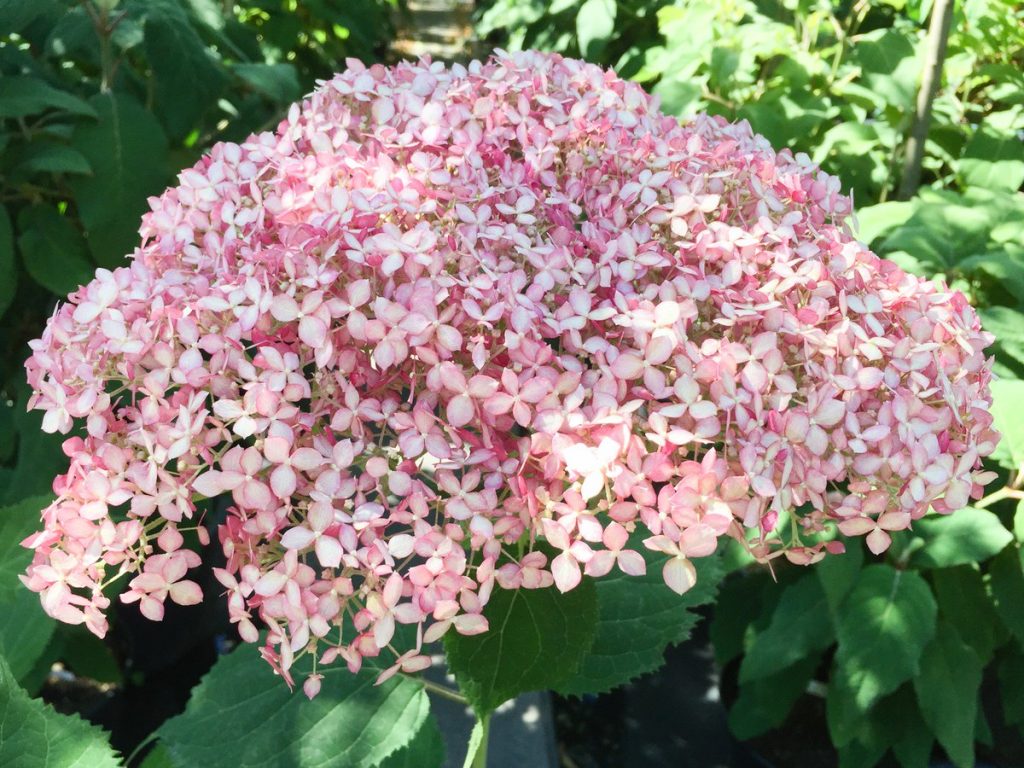
Hydrangea pink anabel variety description photo
- Powdery mildew may appear on weakened bushes. It manifests itself in the form of a whitish bloom, which eventually becomes yellow-brown. Places damaged by the fungus rot and die off. It is not difficult to get rid of this sore - first you need to cut out the diseased areas, then irrigate the crown with copper-containing preparations (copper sulfate or Bordeaux liquid).
- Chlorosis develops in hydrangeas growing on alkaline soil. With such a disease, the foliage becomes pale, veins are clearly visible on the surface, the bush stops blooming. To restore decorativeness, it is necessary to fertilize with dressings with a high iron content.
- Spider mite. Appears during periods of extreme heat and drought. Envelops the underside of the leaves with small cobwebs, sucks the juices out of them. Affected leaves turn yellow and fall off. Acaricides are used for processing - Actellik or Aktara.
To protect garden hydrangeas from diseases and pests, you must follow a number of simple measures:
- buy fresh and healthy seedlings;
- avoid thickening when planting;
- remove weeds and loosen the soil in time;
- provide regular hydration, nutrition;
- timely cut out sore areas on the bush.
Application in landscape design
Hydrangea is suitable for creating different compositions on a personal plot:
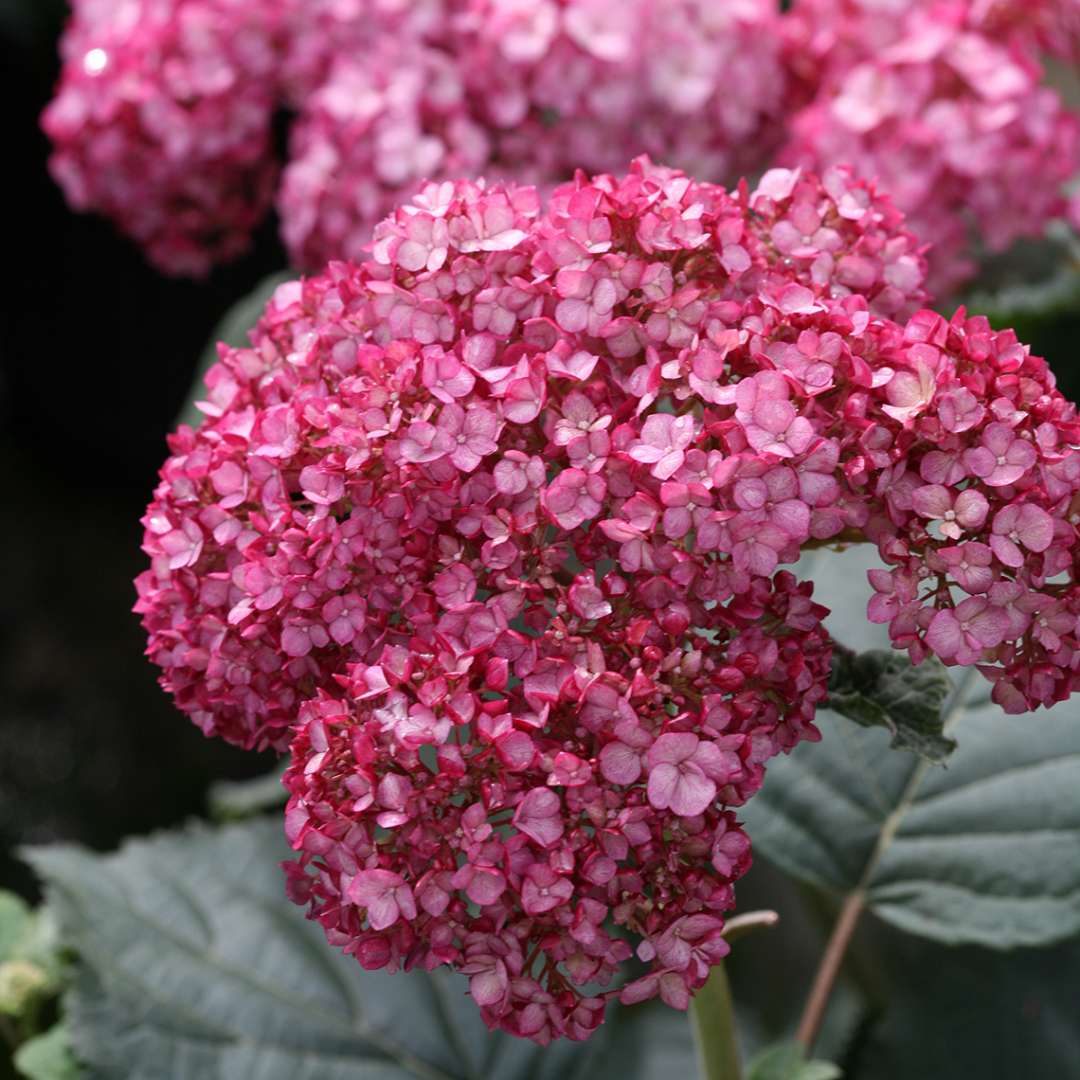
Hydrangea anabel pink
- the bush is planted singly in the center or along the edges of the garden, where you need to create bright colorful landscaping;
- planted in groups in combination with other varieties of tree hydrangea in color;
- a shrub surrounded by perennials - roses, junipers, dwarf firs looks great;
- grown near gazebos, terraces;
- used in the creation of multi-level flowering compositions, planted in the background.
Testimonials
This unique plant has won the hearts of many gardeners, therefore it is in great demand and has a positive characteristic:
- has good frost resistance and winter hardiness, which allows it to grow successfully in different climatic conditions;
- with good care, it blooms for a long time, magnificently, practically not damaged by diseases and pests;
- perfectly tolerates the neighborhood of other vegetation and decorates any area in the garden.

